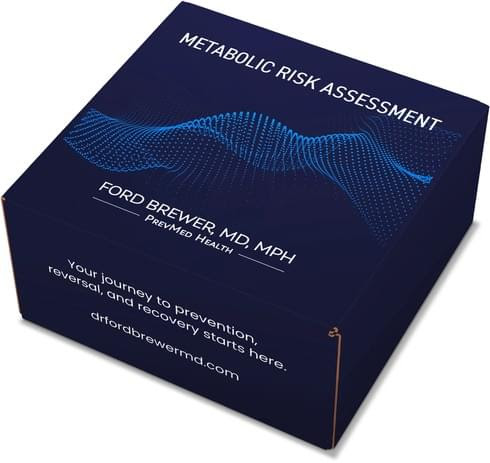This article explores some of the effects of vitamin K2, especially those related to cardiovascular disease.
K2 can affect calcium, insulin resistance, and inflammation.
One of our recently released videos on K2 and artery calcification received a lot of attention in the comment section. Unfortunately, it was clear from those comments that people were confused about several important matters. That said, in this article, I want to clear things up.
https://i.ytimg.com/an_webp/mI4kKTpWtoY/mqdefault_6s.webp?du=3000&sqp=CKbmq50G&rs=AOn4CLBSnZRa1S-zWEbelIH5ui4P0Q24lA
Let’s talk about pleiotropic roles. What are our pleiotropic roles? The short version- one thing that can cause multiple effects.
One of the key places we see this in medicine is genetics. We have pleiotropic genes. For example, the Marfan’s gene. It creates long fingers, a thin body, a deformed chest, mitral valve problems, joint problems, and eye problems. In other words, one gene (Marfan’s gene), is associated with multiple effects (long fingers, heart, eye, chest structure problems).
To change gears, you don’t have to be a physician or a geneticist to see a pleiotropic effect when taking simple medications.
For instance, many of us have probably taken Benadryl. It’s given for nausea. It’s offered for sleep. It’s used for itching. As you can see, there are multiple uses for this antihistamine.
We often call these pleiotropic effects, “drug side effects”. That said, these different “drug side effects” may seem unrelated until you look closer. Regarding Benadryl, ask yourself this. What does sleep have to do with an allergy? Moreover, what does sleep have to do with itching?
To answer that question, it has to do with histamine. You see, Benadryl is an antihistamine. When it blocks histamine, it starts having many pleiotropic effects.
As a comparison, the Marfan’s gene changes the way the body makes connective tissue. Specifically, places where connective tissue are essential in terms of the shape of the chest, how long fingers are, the eyes, and aorta.
An interesting fact, a defective aorta can kill a Marfan’s patient at age 30. Essentially, their genes code for the aorta to self-destruct.
Image from http://zinkmd.com/portfolio/amet-sollicitudin/
Next, we’ve talked about pleiotropic drugs in the past. For example, we’ve talked about pleiotropy with statins multiple times. Most of the medical community prescribes statins for their impact on cholesterol. I don’t usually. However, when I recommend statins, it has more to do with the pleiotropic mechanism of statins on cardiovascular inflammation.
Do you remember when I spoke about the pleiotropic effects of insulin? To refresh your memory, my cognitive decline, and Alzheimer’s videos almost always hit on this.
If you inject insulin into the nose, it will pass the blood-brain barrier. Once insulin goes past the blood-brain barrier and gets into the brain, it has different mechanisms. Most revolve around affecting the hippocampus and biochemical mechanisms of memory formation. Therefore, it could be argued because insulin finds its way to the brain, it could have unexpected effects.
Anyway, biology and medicine can be a bit complicated. Nonetheless, we need to understand some of these things if we’re going to do the best job we can at preventing heart attack, stroke, and cognitive decline. I digress.
Back to heart attack, stroke, and K2. What are some of these different mechanisms for K2? Well, K2 carboxylates- a couple of enzymes that are very important in several processes here:
1. MGP- matrix Gla protein
2. Osteocalcin
Clearly, K2 activates enzymes (MGP & Osteocalcin). These enzymes have a lot to do with the calcification of bone and other tissue, like plaque.
The bottom line is, the previously mentioned enzymes impact plasma, glucose, and insulin sensitivity. Also, there’s an impact on inflammation and women. It affects the markers involving inflammation: AMPK and PPAR alpha.
An article published by ELSEVIER has commented on some of these pleiotropic effects of Vitamin K2.
https://pubmed.ncbi.nlm.nih.gov/16815498/
In this review, the authors suggest that plaque in the arteries contains a vitamin K-dependent protein, MGP (Matrix Gla Protein). Warfarin, an antagonist of Vitamin K, induces calcification in rats’ arteries and heart valves. Undercarboxylated MGP might increase vascular calcification. Vitamin K2, specifically menaquinone-4, has decreased warfarin-induced calcification in rats. Also, supplementation with Vitamin K1, Vitamin D, calcium, zinc, and magnesium was shown to preserve the carotid artery’s elastic properties.
Another way of looking at it is vitamin K. It involves K1 and K2. It involves:
• Anti-inflammatory effect
• Regulation of adipokines
• Lipid-lowering effect
• Calcium effect
• Insulin sensitivity
K2 has a significant impact. It has many different roles. K2 has more effects, consequences, and roles that we need help understanding.
If you found this article helpful and want to start taking steps toward reversing your chronic disease, Dr. Brewer and the PrevMed staff are ready to serve you no matter where you’re located.
To find out more, schedule a consult here: prevmedhealth.com
REFERENCES:
1. https://prevmedhealth.com/vitamin-k2-and-artery-calcification-series-part-1/https://prevmedhealth.com/vitamin-k2-and-artery-calcification-series-part-2/
2. https://prevmedhealth.com/coronary-calcium-score-under-utilized-but-still-a-great-test/
3. https://prevmedhealth.com/ct-angiography-the-plaque-screening-test-with-lots-of-potential/
4. https://prevmedhealth.com/reversal-of-coronary-calcium-score-gerrys-story/
5. https://prevmedhealth.com/what-vitamin-d-can-do-to-your-immune-system-cv-health/
6. https://prevmedhealth.com/can-you-take-vitamin-k2-with-blood-thinners/

